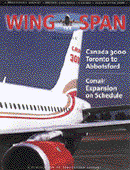
|
|
Abbotsford
Airport Land Use Plan Overview
The airport's modern era began in 1997, when thanks to an enlightened National Airports policy, the City of Abbotsford took command of the entire facility and lands, from Transport Canada. The Abbotsford Airport Authority was formed, and to chart its progress a 10 Year Land Use Plan was created as a rational, comprehensive framework for development of the 519 hectare ( 1283 acre) property and the new terminal building built in 1997. Core Airport Land Uuses: (1) Runway/Taxiway System. (2) Airport Operations. (3) Aerospace/ Air Cargo (4) Corporate/Commercial Aviation (5) Air Terminal/Groundside (6) Agricultural Reserve. (7 Environmental Reserve. The Land use Plan adopted in 1997 is subject to a comprehensive review in 2006 and every 5 years thereafter. Background: The federal government (DOT and later Transport Canada) had managed the operation since the second world war. Originally it was a Royal Canadian Airforce base, one of a very few in BC with runways capable of handling the larger military and commercial aircraft. It later rose to fame, with the Abbotsford International Airshow becoming a North American leader. For years, Abbotsford Airport was a backup to Vancouver International in the event of fog or certain other natural or man mad problems. Today it challenges Vancouver as a viable alternative for scheduled and chartered airline flights. Hank
Snow Staff Profile A
Day at YXX According to Canwest Manager David Dunstan-Adams, unloading guest baggage from aircraft, grooming aircraft (cleaning the cabin), and inspecting the apron (tarmac) for debris before and after aircraft arrivals and departures are additional responsibilities of the team. Canwest handles flight service operations for Westjet and Canada 3000 Airlines in Abbotsford and has operations at Victoria Airport. Ensuring the safety of airline travellers at Abbotsford are the British Columbia Corps of Comissionaires (BCCC). The BCCC perform screening of WestJet and Canada 3000 passengers, including airport security at Abbotsford. Made up of former military and RCMP personnel, the BCCC is a non profit organization. Traffic control, bylaw parking and specialized security services are some of the services the BCCC provides for private residences, business, and government organizations. Canwest and the BCCC have supported community initiatives and played a key role during extreme circumstances at Abbotsford. Last fall the two organizations had representatives in the Tracker (water bomber) Pull, an event hosted by Conair Group with the proceeds going to the Kidney Foundation. Air Canada guests stranded on the apron at Abbotsford in one of the Airline's Airbuses, diverted from Vancouver due to severe fog last December, were the recipients of the enthusiastic spirit of the two organizations. On their own initiative, Canwest and the BCCC ensured that the guests, their belongings, and the Airline's cargo were unloaded safely.
|
